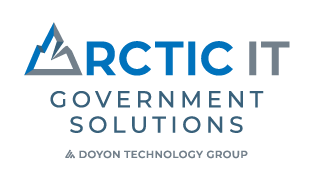Automation is reshaping how federal agencies manage casework, from fraud detection and FOIA triage to benefits eligibility and citizen complaints. In theory, it’s a win. Agencies get faster outcomes, reduced backlog, and greater consistency.
However, case management is more than speed of services. Its measurement of success is centered around impact. Every automation rule or AI model influences decisions that affect real lives.
So, what does responsible automation look like in federal casework?
Why Automation Appeals to Federal Case Managers
Federal workloads are massive. The U.S. Government Accountability Office (GAO) reports show some agencies process hundreds of thousands of case actions annually.
Today’s reality is that task automation offers real world potential:
- Flags anomalies in fraud investigations before human review
- Triages high-volume intake, routing based on complexity
- Auto-populates case fields from structured or semi-structured data
- Guides workers through repeatable decision trees and eligibility rules
With platforms like Microsoft Power Automate, ServiceNow Flow Designer and Automation Engine, and Salesforce Flow, these capabilities are increasingly configurable due to their low-code/no-code environments.
The Problem: Not All Automation is Created Equal
Automation works well for transactional tasks – like updating shipping status. But in high-stakes casework, risks escalate:
- ⚠️ Bias baked into algorithms
- ⚠️ Black-box decisioning with no audit trail
- ⚠️ Loss of human context in edge cases
- ⚠️ Lack of recourse for affected citizens
Automation can amplify flawed processes just as easily as it can optimize good ones. The trick is to recognize where it can be properly utilized to support your agency’s day-to-day processes.
What Responsible Automation Looks Like
Responsible automation is grounded in transparency, fairness, and human oversight.
The Office of Management and Budget (OMB) 2024 Memorandum M-24-18 (building upon Memorandum M-24-10, Advancing Governance, Innovation, and Risk Management for Agency Use of Artificial Intelligence) offers a strong baseline:
- ✅ Be transparent about what’s automated and why
- ✅ Use explainable AI methods where possible
- ✅ Always allow for human intervention in high-impact decisions (aka Human-in-the-Loop)
- ✅ Monitor models over time for drift or unintended outcomes
In the context of case management, this means:
- Documenting automation rules and exceptions
- Flagging critical decisions (rather than allowing the automation to decide)
- Ensuring audit trails for every automated action
- Empowering caseworkers to override or escalate tasks
Federal Agency Automation Examples in Practice
Federal Civilian
- U.S. Department of the Treasury Fraud Detection: AI flags suspicious patterns, but human investigators make final determinations.
- U.S. Department of Health and Human Services (HHS) Benefits Eligibility: Rule-based automation assists with initial checks; the flagged applications receive human review.
- Freedom of Information Act (FOIA) Request Routing: AI helps prioritize requests by complexity; legal staff retain final release authority.
Department of Defense
- DoD components are exploring AI to streamline personnel case tracking, automate readiness assessments, and enhance logistics workflows. However, human oversight remains critical, especially in decisions affecting service members’ careers, benefits, or security clearances.
Questions Your Agency Should Ask Before Automating Casework
Start with these questions when you’re considering whether to automate certain task for federal casework:
- Can a non-technical person understand how this works?
- What’s the potential harm if this automation fails?
- Is there a clear path for redress if something goes wrong?
- Are we replacing human discretion or assisting it?
- Is our automation reinforcing equity or eroding it?
For a green light, your answers should point to a simple automation with low risk for harm, a plan for failure, and insurance there will be human discretion for high-impact decision making.
Create Your Automations for Good
Bad automation is the nemesis of good casework.
Done well, it helps caseworkers focus on what matters: complex decisions, human interaction, and mission-driven service. Done poorly, it creates opacity, erodes trust, and amplifies inequality.
AI automation technology is powerful. What matters most is how we use it and where we draw the line.
At Arctic IT Government Solutions, we work with agencies to design automation strategies that enhance – not replace – human judgment. From fraud detection to eligibility workflows, our AI strategic planning services help you build systems that are transparent, accountable, and people-first.
If you’re navigating the ethics and implementation of AI in casework, connect with us today and let’s talk about how we can help you move forward responsibly.

By Alex Kakar, Director of Business Development at Arctic IT Government Solutions

